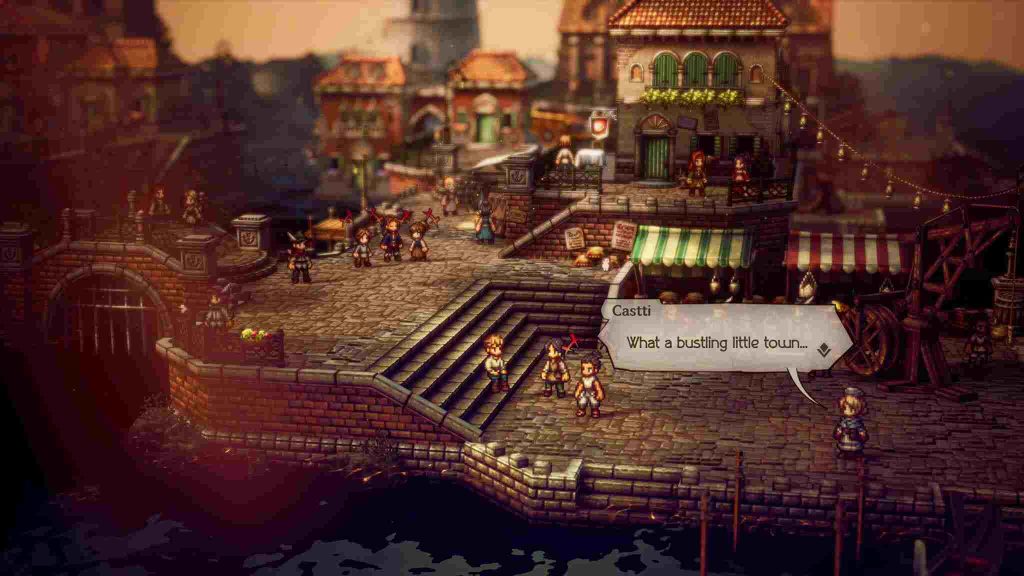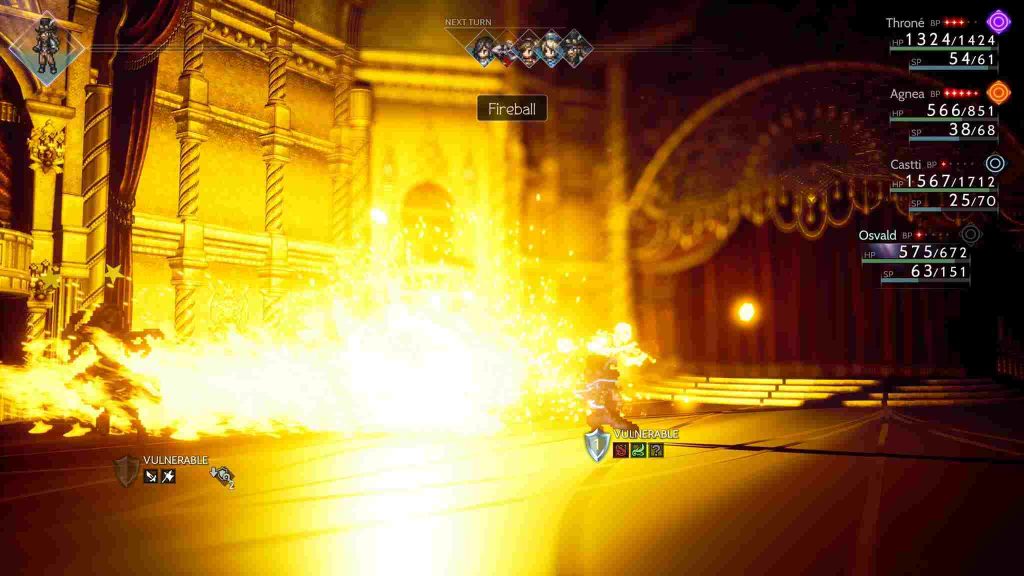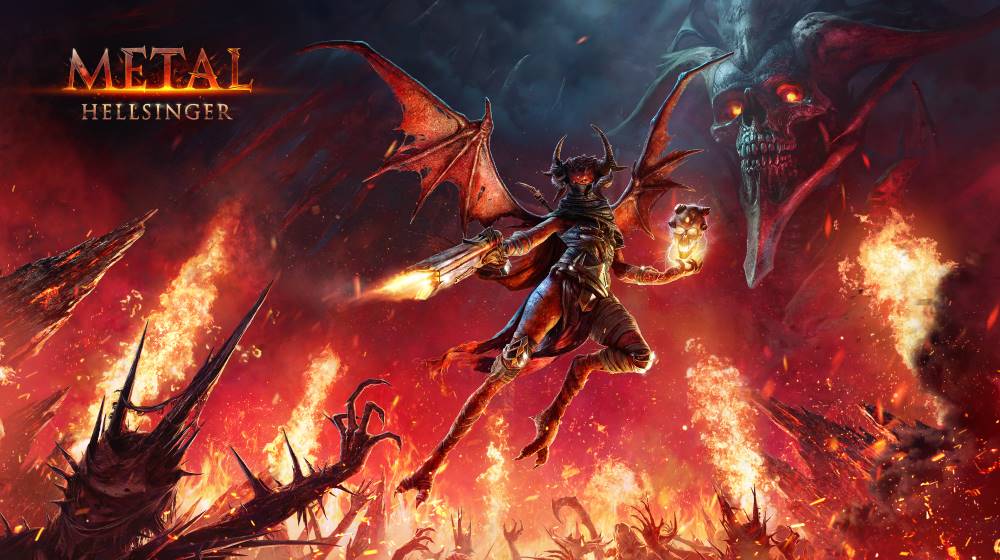Octopath Traveler II Review – A Timeless Adventure
Octopath Traveler II Review
Octopath Traveler II is the follow-up to the well-received Octopath Traveler that dropped back in 2018 for the Nintendo Switch from Square Enix and Acquire. A demo dropped earlier this month, featuring a playable first three hours of the game and allowing you to learn about the eight new protagonists featured in the sequel.
In the land of Solistia, the world moves into an era of progress, introducing its denizens to steam power and new ideas. Eight different travelers strive to make their mark on this brave new frontier as they take on this new world to resolve their dreams amid dangers and challenges. What awaits these adventurers as they traverse through this new world?
How would Octopath Traveler II compare to the original game? Will it be more of the same experience, or will we tread new ground as promised in its many trailers and promotional materials? Tally forth and choose your traveler, it will be a long journey!
A World of Progress
The differences between Octopath Traveler and Octopath Traveler II are subtle and incremental. Octopath Traveler II retains so much of the charm of the original that it feels like the exact same game at times. From the distinct pixel art style, the turn-based battle system implementing BP, and the unique eight character classes that serve a specific purpose for the party, fans of the original will surely know what to expect.
I would even say that you don’t need to play the first game at all to get into Octopath Traveler II, but those who have played the original would notice these changes during their playthrough. Having played the original game on the Switch, playing on a PS5 this time around gave the performance a noticeable push, with the load times being quicker and the performance much smoother.
For those new to the franchise, Octopath Traveler II follows a group of eight travelers who are dispersed throughout the world. You would choose a protagonist who will be with you until you complete their main story, and you would build your party by allowing other travelers to join your ranks. While you share equipment, experience, and the occasional odd banter, each traveler experiences their own saga alone.

Octopath Traveler II now boasts a day and night mechanic that affects how players interact with the world. While many open worlds struggle to implement this time feature, Octopath Traveler II embraces it and completely flips the script.
In the original, each of the eight travelers has specific interaction skills such as observation and inquiry to obtain information, steal and purchase to acquire items from townsfolk, and even provoke and challenge to actually engage random NPCs in battle.
This playbook is flipped in Octopath Traveler II, where certain characters have separate day and night mechanics, adding a gameplay layer to their nuanced backgrounds. One prominent example includes Osvald, the disgraced scholar, who, during the day, has the scholar’s ability of inquiry that allows him to observe individuals and ascertain information from them. At night, he can mug these same individuals for their belongings, showing the player what he has done to survive life in prison.
On the other hand, you have the inquisitor Temenos, who also has the same cleric ability to guide NPCs during the day. At night, he has the ability to interrogate, where he challenges the enemies into battle, “breaking them” to reveal information. I found this interesting as there are many overlaps between characters, allowing you to create a more well-rounded exploration party, whereas its predecessor made the party more straightforward.

Day and Night cycles can be toggled manually, or you can simply progress through them by moving into different areas. While more enemies come out at night, your characters have specific Talents that take advantage of this mechanic. Thorne and Temenos’ talents allow for buffs for your party and debuffs for your enemies at the start of the battle when engaging enemies at night.
Other characters have class-specific talents, such as Hikari (Warrior) and Ochette (Hunter) who can each learn skills and beast abilities from challenging NPCs and capturing beasts. On the other hand, Agnea (Dancer) and Partitio (Merchant) can make their followers give them special bonuses when using dance buffs or dealing with shops, respectively.
Further boosting battles, the introduction of Latent Power is Octopath Traveler II‘s take on limit breaks. Each character, when using abilities or taking damage, can increase the Latent Power bar (represented as a circle) and, when fully built, can use it to their advantage, turning the tide in battle. Castti the Apothecary can use medicinal items without consuming them, Thorne can move twice, and both Hikari and Ochette can access a new set of abilities for massive damage.

Character customization is front and center in Octopath Traveler II, which also expands on sub-classes. Now, you can secure licenses from guilds, allowing multiple characters to change classes. You can get up to three licenses when completing guild quests, so if you wanted to have three extra scholars on your team for massive elemental damage, you may. There are also some special classes in the world, such as the Inventor, that you can introduce as a sub-class with their own unique results.
As much as there are new things, Octopath Traveler II suffers from the same issues that plagued the first game. The protagonist still can’t be removed from the party early on until you complete their main story, which can be a pain, especially if you chose a difficult character to start with. There are also some instances where you are forced to level up certain characters to meet recommended level requirements to complete their main story.
Despite this, Octopath Traveler II makes it easier to collect all eight characters, unlike in the first game, where everyone was placed in awkward parts of the map that sometimes required level grinding.
If It Ain’t Broke…
Some improvements in Octopath Traveler II are much more subtle than others, such as the new animations added when you’ve used an ability that’s in conjunction with a maxed-out BP, which adds to the dramatic effect with the epic music playing in the background. It looks even better on the PS5 thanks to the cleaner visuals and smoother frame rates.
Not surprising at all, the music score in Octopath Traveler II is top-notch. There are many instances in the game where sequences are elevated by the musical tracks, and sometimes, it even masks the obviously mediocre dialogue and story that plagues this game, causing a bit of drag to the cut scenes.

Character backgrounds have also been switched up to avoid overdone storylines with specific classes, but many still aren’t fleshed out. You’ll either get an uninteresting character with a riveting plot or a nuanced character with a predictable story. Rarely will you get a combination of the two, which I found in Throne, but it was a retelling of Primrose’s story from Octopath Traveler I. Hey, if it ain’t broke…
It also begs to be mentioned that there’s a noticeable difference between the English and Japanese dubs. I found the English dub exaggerated, while the performances of the Japanese dub felt a lot more nuanced and restrained, especially with Throne and Temenos, whose English voice actors had the tendency to overact.
A neat little treat for Octopath Traveler II is the Crossed Paths side stories, where different characters literally cross paths and have their own adventure. While the occasional banter in the first game served as mere flavor text, now you actually have two or more characters collaborating on a quest, and while it doesn’t necessarily add to their main story, it’s a nice change of pace to the random side quests that you usually partake in.

What We Liked
- New Gameplay additions such as Latent Powers, Crossed Paths story quests, and Class Guilds are welcome mechanics that elevate the experience.
- Day and Night mechanics are well done as it expands on both the character development and activity.
- Overall game synergy blends with the new changes while maintaining the very essence of Octopath Traveler.
- The soundtrack is utterly fantastic
What We Didn’t Like
- Certain character storylines aren’t well fleshed out and can be a bit of a drag.
- The inability to switch out protagonists and the forced grinding of weaker characters can drag the momentum.
- The Dancer class.
Verdict: Buy It!

Octopath Traveler II is an improvement over its predecessor that keeps all of its familiar charms while elevating the experience at the same time. It adds just enough for old players to find joy with the new travelers introduced, but it also doesn’t alienate any newcomers who want to jump ahead with this new game.
The music and gameplay conspire to create a timeless adventure for every JRPG fan to experience. While it still has some minor convention gripes, for the most part, it doesn’t take away from the overall enjoyment of the game. JRPG conventions abound, so know what you’re getting into.
Whether or not a sequel is in the future for the series, I hope to see the Octopath lore further expanded in the future as something that takes on a bigger role in the Square Enix portfolio.
*Octopath Traveler II was reviewed on a PS5 with a review code from its publisher.




